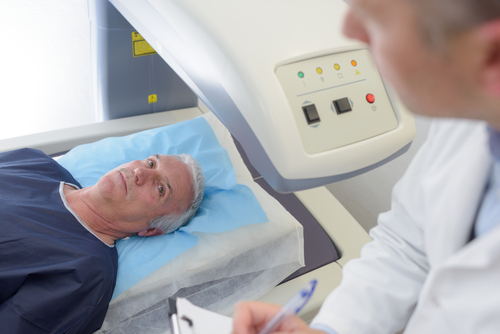Men with low-risk prostate cancer can safely receive a single high dose of brachytherapy — a type of radiation therapy delivered directly into the tumor within a few minutes — as an alternative treatment for their condition, a study shows.
After three years of treatment, 100% of men who received the treatment remained without signs of cancer recurrence, researchers said at ESTRO 38, the 2019 European Society for Radiotherapy and Oncology Annual Meeting, held in April in Milan, Italy.
The oral presentation, “Single dose high dose-rate (HDR) brachytherapy as monotherapy for localised prostate cancer,” was led by Hannah Tharmalingam, a clinical research fellow at Mount Vernon Cancer Centre, Northwood, and The Christie NHS Foundation Trust, Manchester, U.K.
Brachytherapy is a cancer treatment that places small radioactive sources directly into a patient’s tumor, ensuring that the radiation is delivered specifically to cancer cells while it spares healthy surrounding tissues.
Usually, this treatment involves the placement of a radioactive seed inside the tumor, which delivers low doses of radiation over time. But prostate cancer patients have another option: a high-dose rate brachytherapy that places the radioactive material temporarily and for shorter periods, while delivering high doses of radiation during that time.
The latter approach “usually means patients make four to six visits to the hospital for a series of lower-dose treatments,” Tharmalingam said in a press release. Thus, “we wanted to see whether we could get similar results but with just one high-dose treatment, saving time for the patient and the hospital.”
The study included 441 men with localized prostate cancer who received a high-dose rate brachytherapy in a single 19 Gy dose (a measure of radiation). Among them, 44 men had low-risk disease, 285 medium risk, and 112 men had high-risk prostate cancer.
None of the patients received surgery or chemotherapy, but 37% were also given androgen deprivation therapy (ADT) — a treatment that lowers testosterone levels to prevent prostate cancer growth.
For an average of 26 months, researchers monitored patients through their prostate specific antigen (PSA) levels, a biomarker that indicates prostate cancer recurrence.
Overall, 94% and 88% of men had no signs of cancer recurrence after two and three years, respectively. However, men with low-risk disease fared better than medium- or high-risk patients, researchers found.
At two years, 100% of these men remained free of cancer, compared to 95% among those with medium-risk disease, and 92% for high risk. Similarly, at three years after treatment, all low-risk prostate cancer patients had no signs of the cancer returning, while 86% and 75% of medium- and high-risk patients, respectively, achieved the same outcome.
Of the 27 patients who experienced biochemical recurrence — a rise in PSA levels — 25 had their relapse confirmed on radiological analysis. Among those, 10 had their cancer spread to distant organs, while 15 had their cancer return in the prostate only.
The treatment was generally safe, with only 12% and 13% of the patients experiencing moderate genitourinary and gastrointestinal problems, which eventually resolved.
“[High-dose rate] monotherapy delivered in a single dose of 19Gy is a safe and effective treatment for localized prostate cancer that is well-tolerated over the first two years with very good early biochemical control,” researchers said.
Additional studies are now warranted to evaluate the long-term effects of single, high-dose rate brachytherapy in localized prostate cancer, especially in high-risk patients who are more likely to experience a recurrence. Given the low risk of side effects, Tharmalingam believes that doses could be increased for these patients to achieve better outcomes.
“The technology and expertise needed to deliver this treatment is not yet available in all cancer centers. However, given that it may offer time and money savings for hospitals as well as benefits to patients, there is a good argument for investing in this type of radiotherapy,” said Bradley Pieters, MD, PhD, chair of ESTRO’s brachytherapy committee and a radiation oncologist at the Academic University Medical Centers in the Netherlands.

